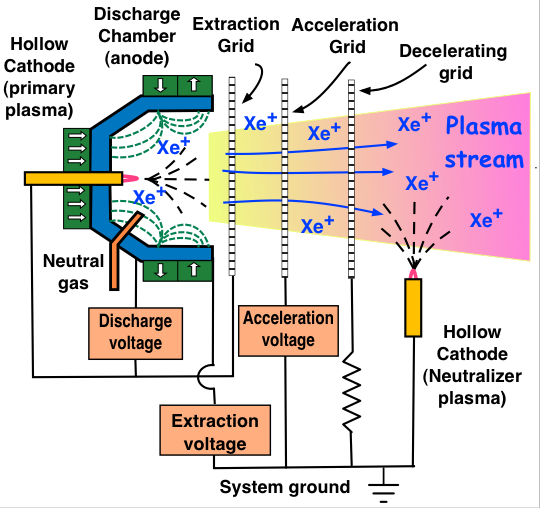Even at the start of NASA’s space program in 1958, the target of our efforts was not the moon but Mars. The head of NASA, Werner von Braun was obsessed with Mars, and his Mars Project book published in 1948, was the blueprint for how to do this, which he revised in 1969. He saw the development of the Saturn V launch vehicle as the means to this end.

A major effort running in parallel with Kennedy’s moon program was the development of nuclear rocket technology. This would be the means for getting to Mars in the proposed expedition launch in November, 1981. The program was abandoned in 1972 when President Nixon unceremoniously canceled the Apollo Program and stopped the production of Saturn Vs. That immediately put the kibosh on any nuclear propulsion efforts because the required fission reactors were far too heavy to be lifted into space by any other means. He resigned from NASA once he realized that his dream would never be realized, and died five years later.
Flash forward to 2004 when President George Bush announced his Space Exploration Initiative to include a manned trip to Mars by the 2030s. There would be manned trips to the moon by 2015 to test out technologies relevant to the Mars trip and to learn how to live there for extended periods of time.
By 2008, the lunar portion of this effort was canceled, however the development of the Orion capsule and what is now called the Space Launch System were the legacies of this program still in place and expected to be operational by ca 2019. The rest of the Initiative is now called NASA’s Journey to Mars, and lays out a detailed plan for astronauts learning how to work farther and farther from Earth in self-sustaining habitats, leading to a visit to Mars in the 2030s. Meanwhile, the International Space Station has been greatly extended in life to the mid-2020s so we can finally get a handle on how to live and work in space and solve the many medical issues that still plague this environment.
However, NASA’s systematic approach is not the only one in progress today.

The entire foundation of Elon Musk’s Space-X company is to build and make commercially profitable successively larger launch vehicles leading to the Interplanetary Transport System which will bring 100 colonists at a time to the surface of Mars in about 80 days starting around 2026. Space-X is even partnering with NASA for a sample return mission called Red Dragon in ca 2018. Meanwhile, a competing program called Mars One (see picture above) proposes a crew of four people to land in 2032 with additional crew delivered every two years. . This will be a one-way do-or-die colony, and loss of life is expected. Mars One consists of two entities: the not-for-profit Mars One Foundation, and the for-profit company Mars One Ventures with CEO Bas Lansdorp at the corporate helm.
But wait a minute, what about all the non-tech issues like astronaut health and generating sustainable food supplies? Astronauts have been living in the International Space Station for decades in shifts, and many issues have been identified that we would be hard pressed to solve in only ten more years. NASA’s go-slow approach may be the only one consistent with not sending astronauts to a premature death on mars, with all the political and social ramifications that implies.
The dilemma is that slow trips to Mars, like the 240-day trips advocated by NASA’s plan exacerbate health effects from prolonged weightlessness including bone loss, failing eyesight, muscle atrophy and immune system weakening. These effects are almost eliminated by much shorter trips such as the 80-day target by Space-X. In fact, the entire $100 billion International Space Station raison de etra is to study long term space effects during these long transits. This existential reason for ISS would have been eliminated had a similar investment been made in ion or nuclear propulsion systems that reduced the travel time to a month or less!
Ironically, Werner von Braun knew about this as long ago as 1969, but his insights were dismissed for political reasons that led directly to our confinement to low Earth orbit for the next 50 years!
Check back here on Sunday, January 22 for the next installment!








